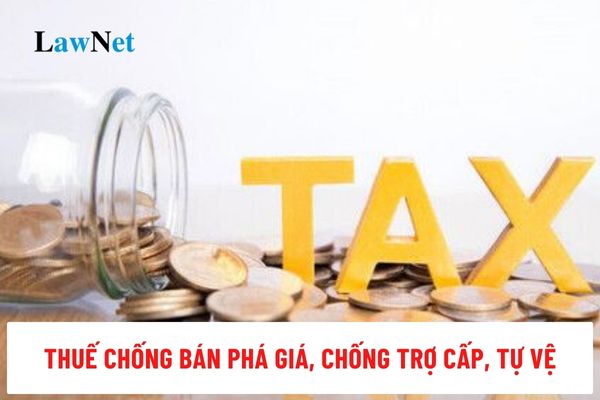What are regulations on application of anti-dumping duty, countervailing duty, and safeguard duty in Vietnam?
What are anti-dumping tax, anti-subsidy tax, and safeguard tax according to the law in Vietnam?
According to Clause 4 of Law on Export and Import Duties 2016:
- Anti-dumping tax is a supplemental import duty applied when imported goods being sold at dumped prices in Vietnam cause or threaten to cause significant damage to the domestic production sector or impede the formation of a domestic production sector.
- Anti-subsidy tax is a supplemental import duty applied when subsidized imported goods cause or threaten to cause significant damage to the domestic production sector or impede the formation of a domestic production sector.
- Safeguard tax is a supplemental import duty applied when the excessive importation of goods into Vietnam causes significant damage or threatens to cause significant damage to the domestic production sector or impedes the formation of a domestic production sector.

What are regulations on application of anti-dumping duty, countervailing duty, and safeguard duty in Vietnam? (Image from the Internet)
What are regulations on application of anti-dumping duty, countervailing duty, and safeguard duty in Vietnam?
According to Article 15 of Law on Export and Import Duties 2016, the application of anti-dumping tax, anti-subsidy tax, and safeguard tax is regulated as follows:
(1). The application, alteration, and removal of anti-dumping tax, anti-subsidy tax, and safeguard tax are carried out in accordance with this Law and legislation on anti-dumping, anti-subsidy, and safeguard measures.
(2). Based on the tax rate, quantity, or value of goods subject to anti-dumping tax, anti-subsidy tax, and safeguard tax, the customs declarant is responsible for declaring and paying the tax according to the legal provisions on tax administration.
(3). The Ministry of Industry and Trade decides on the application of anti-dumping tax, anti-subsidy tax, and safeguard tax.
(4). The Ministry of Finance stipulates the declaration, collection, payment, and refund of anti-dumping tax, anti-subsidy tax, and safeguard tax.
(5). In case the interests of the Socialist Republic of Vietnam are harmed or violated, based on international treaties, the Government of Vietnam reports to the National Assembly for deciding on the application of other appropriate protective tax measures.
In which cases is anti-subsidy tax not applied in Vietnam?
According to Clause 2, Article 86 of Law on Foreign Trade Management 2017, the conditions for applying anti-subsidy measures are stipulated as follows:
Conditions for applying anti-subsidy measures
- Anti-subsidy measures are applied to imported goods when the following conditions are met:
a) The goods are determined to be subsidized as specified in Articles 84 and 85 of this Law and the subsidy level is concretely determined, except for the cases stipulated in Clause 2 of this Article;
b) The domestic manufacturing sector suffers substantial damage or is threatened with substantial damage or the formation of the domestic manufacturing sector is impeded;
c) A causal relationship exists between the importation of the subsidized goods defined in Point a of this Clause and the injury to the domestic manufacturing sector referred to in Point b of this Clause.
2. Anti-subsidy measures are not applied to producers and exporters in developed countries where the subsidy level does not exceed 1% of the export price of goods to Vietnam, producers or exporters in developing countries where the subsidy level does not exceed 2% of the export price of goods to Vietnam, and producers or exporters in least-developed countries where the subsidy level does not exceed 3% of the export price of goods to Vietnam.
- In cases where imported goods originate from a developing country with a volume or quantity not exceeding 4% of the total volume or quantity of similar imported goods into Vietnam, and the aggregate volume or quantity of goods from developing countries meeting this condition does not exceed 9% of the total volume or quantity of similar imported goods into Vietnam, these countries are excluded from the scope of anti-subsidy measures.
Anti-subsidy tax is also an anti-subsidy measure.
The anti-subsidy tax does not apply to producers and exporters in developed countries where the subsidy level does not exceed 1% of the export price of goods to Vietnam; producers or exporters in developing countries where the subsidy level does not exceed 2% of the export price of goods to Vietnam; and producers or exporters in least-developed countries where the subsidy level does not exceed 3% of the export price of goods to Vietnam.

